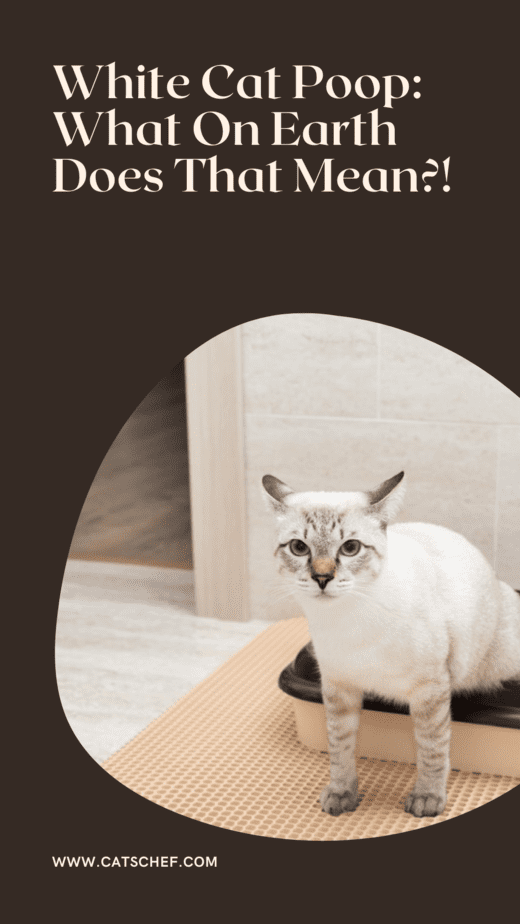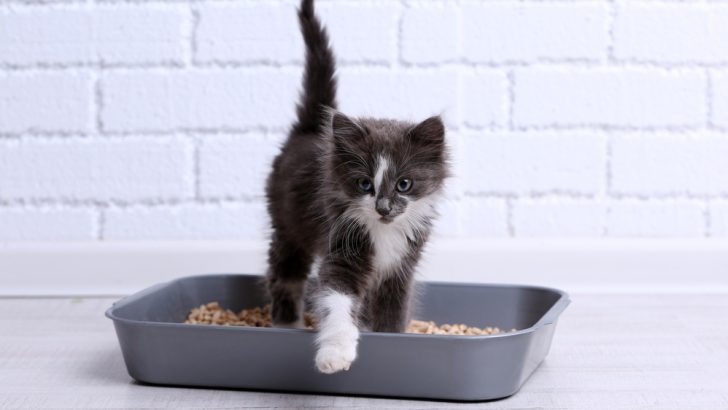When you decide to become a pet parent to a little fluffer, you don’t really think about the prospects of having to scoop her poop out of her litter box each time she goes potty. And, you don’t think about having to observe and analyze the color of her poop. White cat poop means something, right?
Nobody wants to talk about poop, but there are times when you’re better off discussing what’s normal and what’s not.
Sure, everything’s nice and dandy while your cat’s litter box escapades produce healthy poop. For example, when you look at the aftermath of her bathroom visits, you should see a sausage-shaped, brown or black, firm poop.
However, when you see an odd-shaped, strange-colored poop, there might be something wrong with her. Of course, not everything means you should freak out and contact your veterinarian at 3 a.m. to ease your raging thoughts.
But, catching a glimpse of white cat poop peeking through her litter means you need to do some digging (quite literally).
Truth be told, cats can produce poops of numerous shapes, sizes, and colors without communicating a health problem. That’s why you need to keep track of your cat’s poops. Schedule regular checkups, and ensure you catch anything that’s out of the ordinary in time.
Worry not, we’re bringing you everything you need to know about the matter before you start saying goodbye to your fluffy friend because of a little bit of white poop. What are the many cat poop colors? What makes your cat’s poop white? Keep reading to learn that and more!
What are the many cat poop colors?
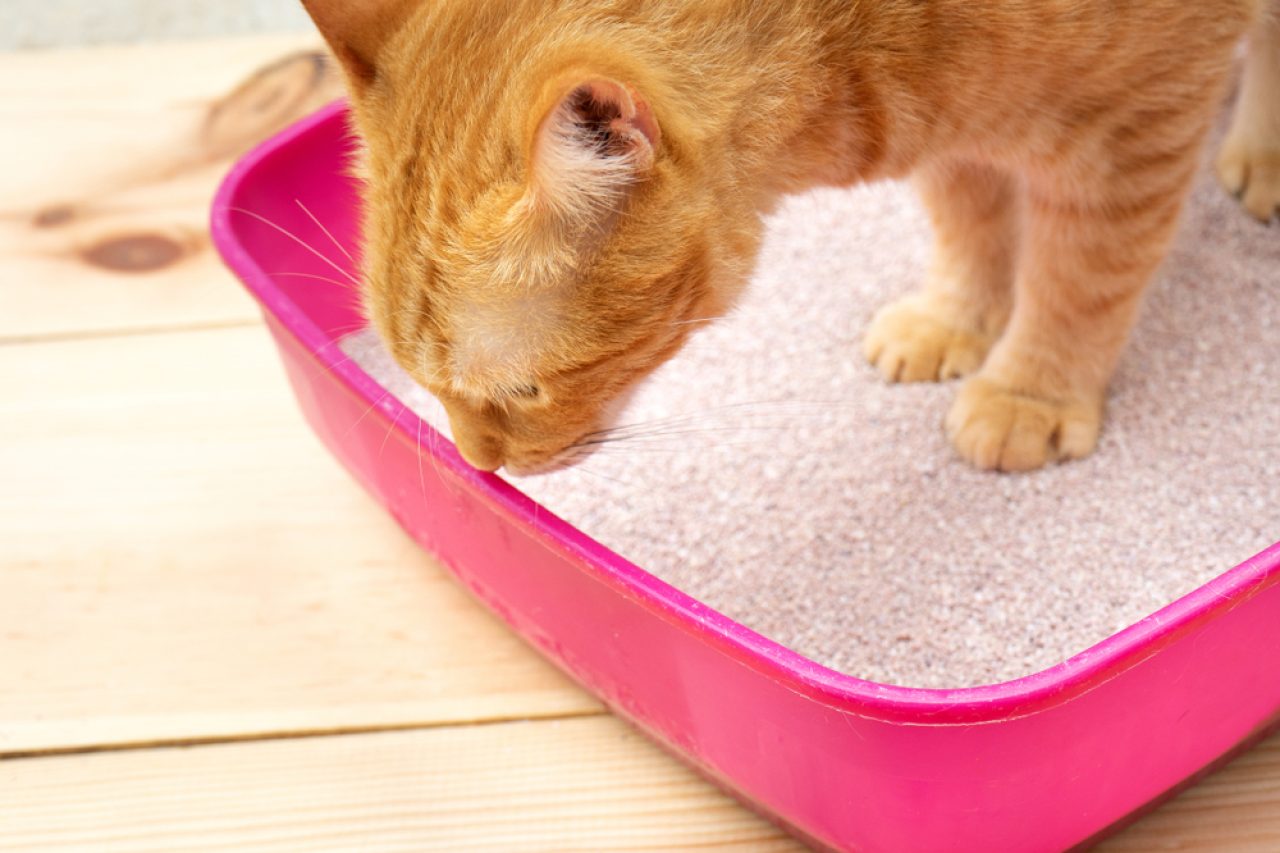
Don’t even try to keep count of how many times we’re about to mention the word poop! We’re a little uncomfortable discussing our fluffers’ bowel movements. But, there shouldn’t be anything stopping us from making sure they’re happy and healthy at all times.
Therefore, we should start the article with a little rundown on different poop colors and what they mean. Brown poop’s typically seen as “normal” and “healthy,” while other colors (and textures) might be a cause for concern. Take a look and decide for yourself – does your fluff have healthy poop?
1. Brown poop
Brown poops are the best! When you’re feeding your cat everything she needs, she should produce little, sausage-like poops that are brown, firm, and pliable. Now, we’re not suggesting you touch your cat’s feces.
But, try to pay attention to what her number two normally looks like. Then, you shouldn’t have trouble discerning whether she’s doing something differently or not. And, depending on what you feed her, the color of her ordure can stretch from light brown to dark brown.
On the other hand, be cautious of the dark brown poop when you haven’t been feeding her anything that could cause a darker color. Dark brown poop can mean there’s some blood present there, and that might be something to check with your veterinarian.
2. Black poop

Oh, you thought white cat poop was a problem! Black cat poop couldn’t be more of a problem. The darker colors mean there’s bleeding somewhere from the upper gastrointestinal tract. Bleeding from the mouth, stomach, or small intestines could cause a darker color.
Actually, there’s even a term to describe black feces – melena. And, the black color means that the blood has gone through the digestive system. You may notice your cat’s poop’s shiny and sticky, which typically means that there’s some sort of bleeding going on.
Check for other symptoms and contact your veterinarian ASAP. Other symptoms of melena depend on the type of bleeding but often include weakness, decreased appetite, weight loss, difficulty breathing, and pale mucus membranes.
3. Poop with red streaks
While you might think that cat poop with red streaks sounds much more terrifying than white or black poop, you couldn’t be far from the truth.
Bleeding can never be a good sign. However, these red streaks only appear when your cat’s bleeding from her large intestine or somewhere else from the lower gastrointestinal region.
And, when these streaks appear only once, they’re probably caused by a tear that’s going to heal without the help of a veterinarian. However, when these streaks keep appearing over a longer period, that means that the bleeding’s caused by something else.
That’s when you should schedule an appointment and observe other changes in your cat’s behavior.
4. Yellow or orange poop
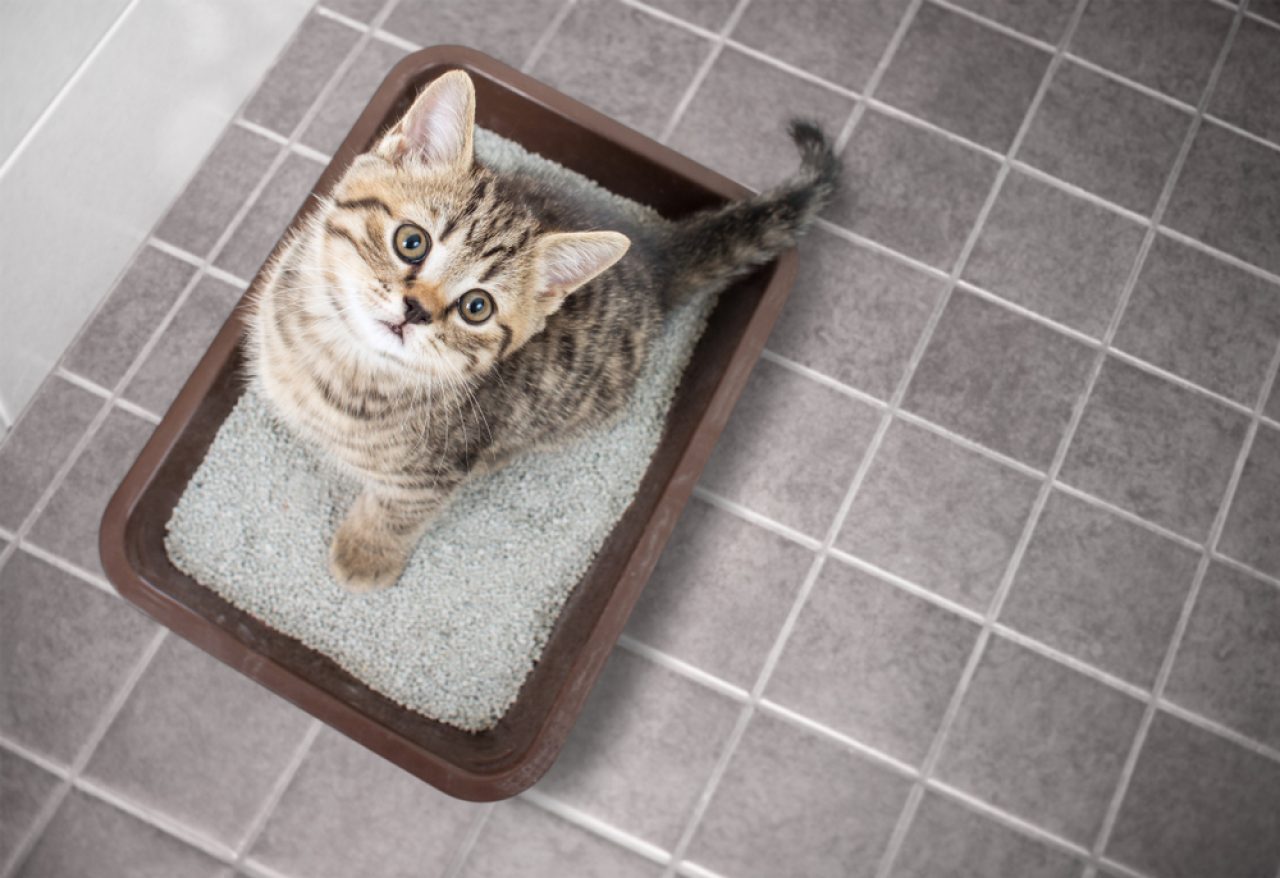
These two colors can mean a bunch of things, but they almost always symbolize a health issue.
Starting from the beginning, bile salts are a primary component of bile and are responsible for the healthy brown color of your cat’s poops. Bile salts are produced by the liver and stored by the gallbladder.
Yellow poops appear when these two organs don’t manage to produce and store bile salts. On the contrary, yellow poops can also appear when your cat passes food through her digestive system too quickly. Meaning before she got the chance to process everything.
Orange poops occur for the same reason. Orange poop can also occur when your cat eats too much orange food (carrots and pumpkins can cause orange poops).
5. Poop with white spots
White cat poop and poop with white spots don’t mean the same thing… But, they do have one thing that connects them. When you notice your cat’s been producing poop with white spots, check whether she’s contracted parasitic worms.
Right off the bat, long and skinny roundworms and rice-shaped tapeworms are the most common worms that find their way into your cat’s digestive system. And, they’re the ones you can actually see with your bare eyes (without the help of your veterinarian).
Take a sample of your cat’s poop and check which ones she’s dealing with before drawing your conclusions. Other symptoms of parasitic worms are coughing, vomiting, diarrhea, bloody poops, pale mucus membranes, decreased appetite, and weight loss.
6. White poop

White poop, the reason why you’re here, can occur for a bunch of reasons. Cats can have white poop when they’re lacking the bile we mentioned beforehand. Alternatively, they could be suffering from diseases that cause the waste to become lighter and dryer.
Other than that, cats can have white poops when they’re eating foods (such as raw foods and bones) that send the levels of calcium and other minerals through the roof. Of course, we can’t forget about the fact that poop can become white when exposed to the outside world.
What makes your cat’s poop white?
White cat poop is bound to make your day worse one way or another. Whether you’re overthinking the possibility of your fluffer having some sort of a disease or you’re wondering whether you didn’t clean her litterbox for too long, you’re probably looking for answers.
We can’t help you with the litterbox thing. But, we can offer you a couple of explanations that could serve as a starting ground for your research. Observe your cat’s behavior, check for other symptoms, and contact your veterinarian when necessary.
1. Fungal Toxicosis
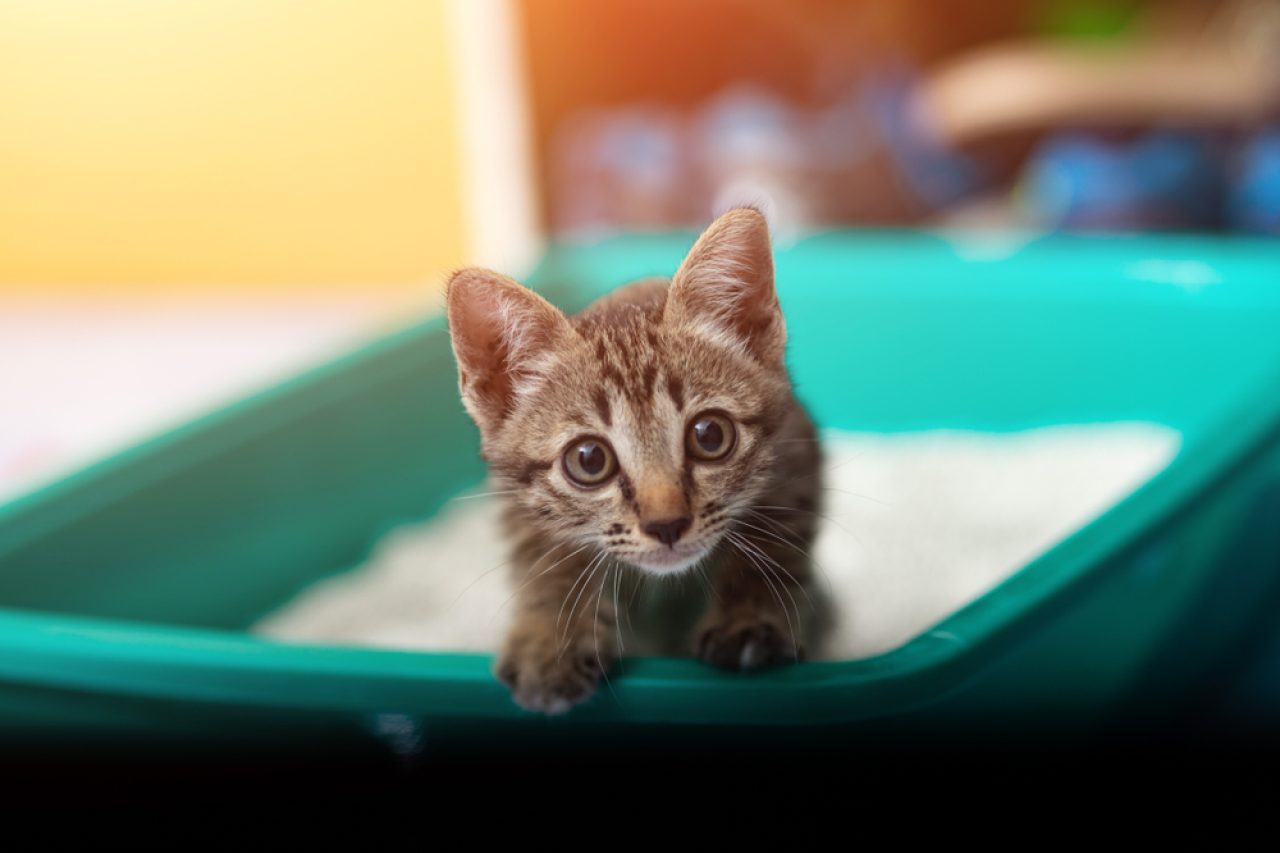
One of the most prominent causes of white poop in cats has to be a disease known as fungal toxicosis. Cats can contract fungal toxicosis when they ingest or inhale toxins created by mold and fungus.
Now, the fungus and the mold that are responsible for fungal toxicosis can be found pretty much anywhere. From food and grains to bedding materials. Other than white poop, cats can show numerous symptoms depending on the way the fungus entered the body.
Some of the most common gastrointestinal symptoms that occur when cats ingest the toxins are vomiting, diarrhea, dehydration, decreased appetite, and weight loss.
On the other hand, cats can inhale the toxins, causing respiratory symptoms. Some of those include sneezing, wheezing, difficulty breathing, bloody nose, nose discharge, and fever.
Fungal toxicosis can be fatal when left untreated. Contact your veterinarian the moment you notice any of these symptoms. Make sure you keep your vet up-to-date about your cat’s whereabouts.
2. Worms and other parasites
Discovering your cat’s suffering from worms can be upsetting and saddening. Worms can wreak havoc wherever they appear, and they can make your fluffer feel very, very uncomfortable.
While some worms might make your cat’s poop appear spotted, others can make the whole thing seem white (disgusting, but possible). Worry not, worms can be treated and eliminated without much trouble. But, before you can do anything, you need to figure out which worms your mouser’s dealing with.
Roundworms, tapeworms, and hookworms happen to play the part more often than other types. They can enter your cat’s body through feces, fleas, or rodents. Whatever the case might be, get your cat examined by a veterinarian as soon as possible.
3. Other health problems
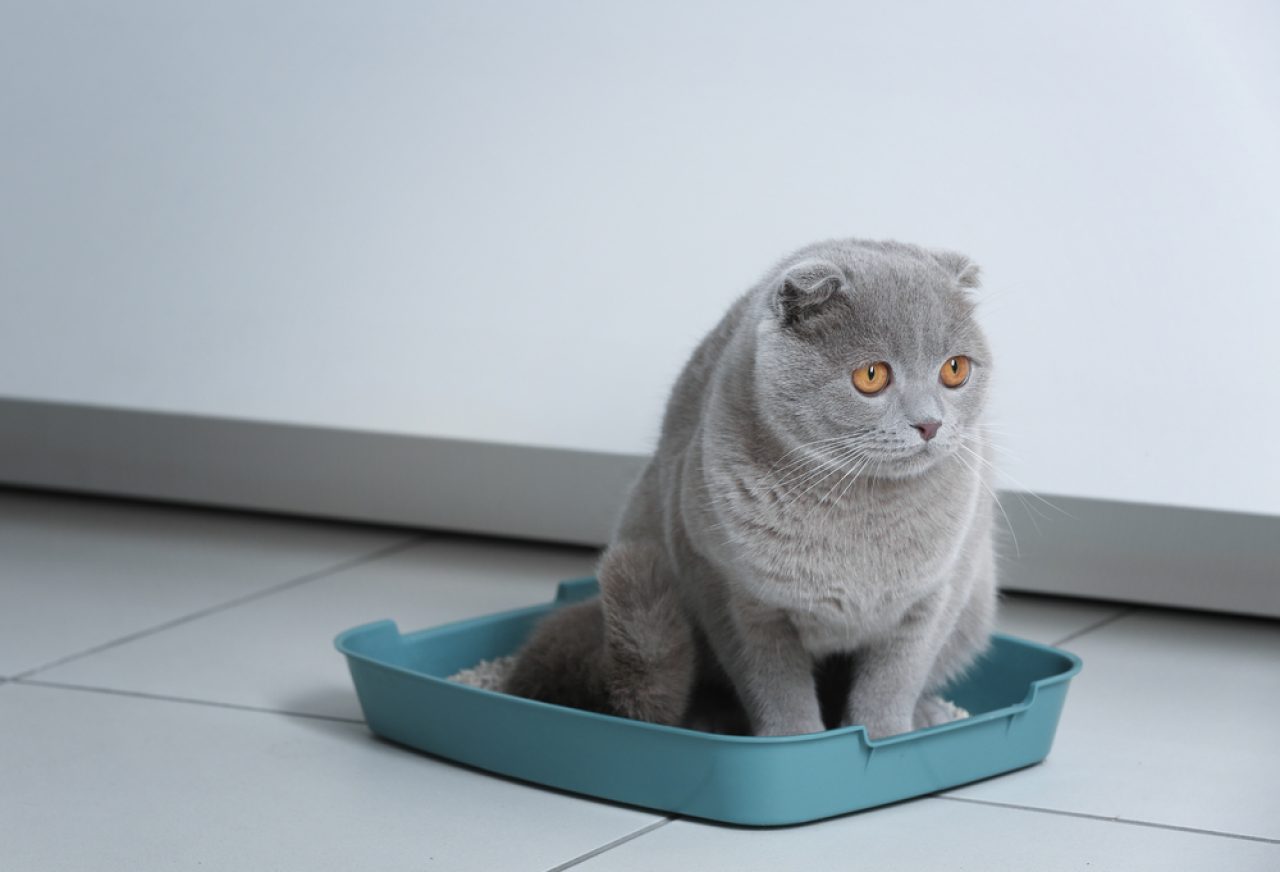
Other than fungal toxicosis and parasitic worms, white cat poop can appear due to numerous health problems. We touched upon the fact that your cat might start leaving white poops behind when her liver stops producing bile or when her gallbladder is unable to store the bile.
Anything that’s connected with your cat’s liver function can affect the way her poop ends up looking. The liver plays a huge part when we’re talking about digestion and conversion of nutrients, deletion of toxic substances from the blood, and storage of nutrients.
When it stops doing these things, every part of your cat’s body becomes affected… And works to create white poop, apparently.
4. Dietary habits and changes
Remember how we argued that eating orange foods can make your cat’s poop orange? Turns out the same thing happens when your cat eats foods that can make her poop white. Foods that are packed with calcium and other minerals, or even fatty foods can cause this, too.
And, we can’t forget about the fact that eating raw meat and bones can also cause your cat’s poop to become white (firm and chalky, too). When you notice such changes and suspect they have something to do with your cat’s diet, check whether you’re feeding her everything she needs to survive and thrive.
Cats are carnivores and they need a bunch of meat, animal protein, and animal-sourced nutrients. While there’s nothing wrong with giving your cat a meaty treat here and there, you’re better off feeding her commercially available (and appropriate) foods that were designed to fit her needs.
5. Poor digestive health
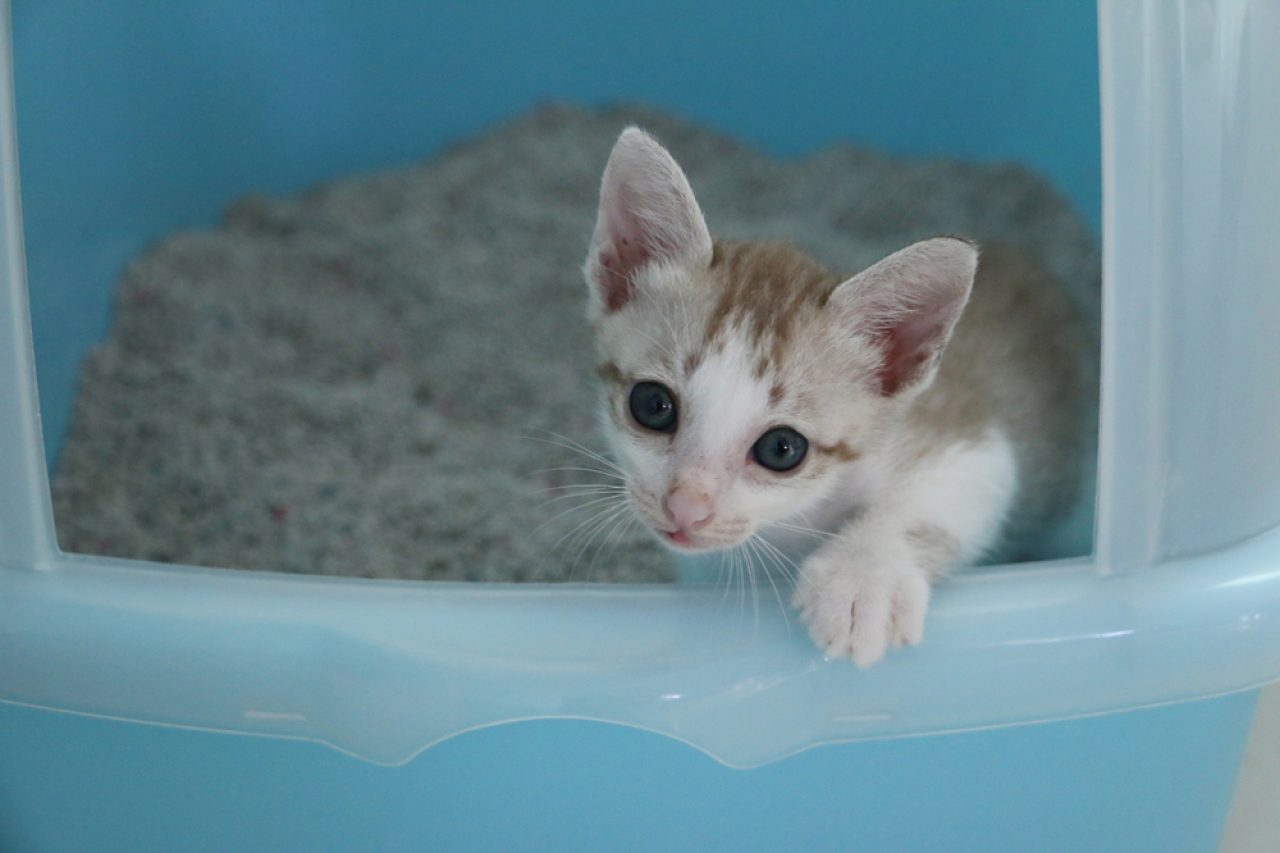
There’s a chance your cat might be suffering from poor digestive health and a lack of good gut bacteria. White poops aren’t normal, but they’re a common occurrence among cats dealing with GI upsets and other digestive problems.
That’s why they often go unnoticed by pet parents who think there’s nothing wrong because “She’s had those white streaks from the beginning!”
The best way to work on your cat’s gut health seems to be to enrich her diet with necessary nutrients, introduce prebiotics and probiotics, improve dental hygiene, exercise, and ensure a stress-free lifestyle.
6. Time (old poop can become white poop)
That’s right, you might not have been cleaning your cat’s litterbox as often as you thought. Sure, you don’t have to remove your cat’s poop the moment she’s done with her business. But, you shouldn’t leave the poop there for a couple of hours (or days).
While the odors might become unbearable, the mold that spreads from the poop might become a serious health hazard. First things first, cat poop turns grey when left outside for a couple of hours. However, grey poop turns white when the mold starts settling and spreading around.
And, the only way you can prevent that from happening consists of cleaning your cat’s litter box regularly and disposing of her poop (and litter) the right way. Use a sealed bag to throw away your cat’s poop and don’t forget to secure the litter, too. Take the bag outside as soon as possible to prevent mold or odors from spreading around afterward.
What about other types of white cat poop?
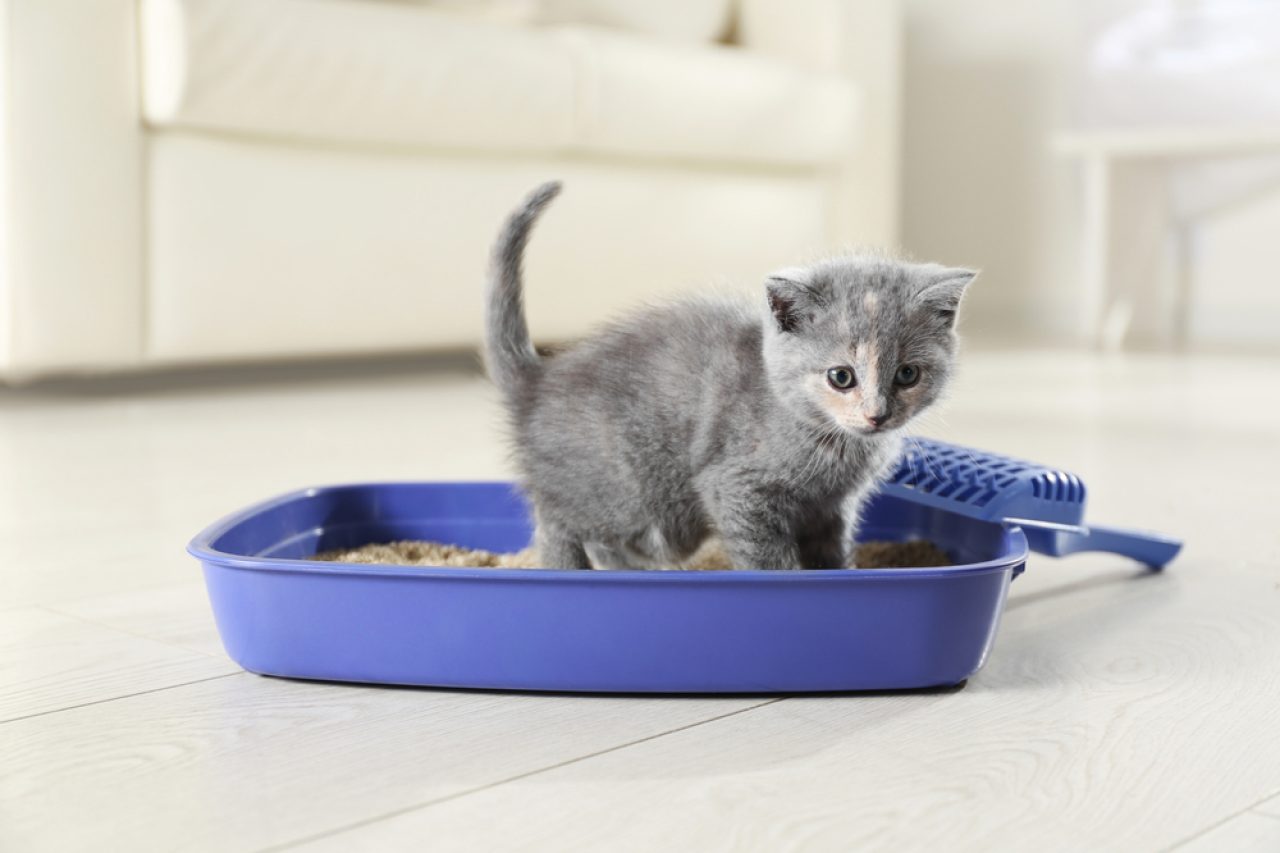
1. White specs
We already mentioned that your cat can sometimes produce poop with white specs. Depending on the color of the poop, numerous health problems can cause those specs.
Whether the poop’s yellow or green, the specs are commonly caused by parasitic worms.
And, you shouldn’t face that many problems trying to figure out whether she’s suffering from worms considering most types of worms can be seen with your bare eyes. Other than worms, you might be able to see the eggs that the worms made.
Other than that, you might notice your cat hunching her back, scratching the area underneath her tail, and scooting her bottom along the ground.
2. White liquid
When you notice your cat’s poop turning liquid (regardless of the color), you should contact your vet. Liquid poops almost always mean there’s a health problem that needs to be addressed.
Or, they mean there’s a need for a dietary change. Whether that’s consuming fewer fiber-packed foods or switching to solids for a couple of days. Liquid poops (a.k.a. diarrhea) can lead to severe dehydration and other complications.
Poops that are half-firm, and half-soft aren’t welcome, either. When we’re talking about the color, white liquid poops often mean that there’s a severe infection or bacterial imbalance in the bowel that’s responsible for your cat’s discomfort.
3. White mucus

Cat poop normally contains mucus which means you shouldn’t freak out the moment you notice there’s a little bit in there. Mucus lubricates the lining of the colon and helps things go through the colon smoother and easier.
Mucus can be white, pale, yellow, and green without meaning there’s something wrong. However, when you notice excessive amounts of mucus over an extended period, you should contact your veterinarian.
A normal amount of mucus looks like a thin, greasy coat covering your cat’s feces. An abnormal amount of mucus looks like slimy, white liquid accompanying your cat’s feces (rather than covering them).
4. White mold
White mold covering your cat’s poop means one of two things. First things first, your cat might be suffering from fungal toxicosis caused by the ingestion or inhalation of toxins coming from fungi or mold.
As a result, your cat’s poops can come out with white mold or turn white when sitting outside for a longer period. On the other hand, your cat’s poop can become white and moldy from sitting outside for more than a couple of hours.
Make sure you clean your cat’s litterbox thoroughly (and often) to keep these problems away. Whatever the case might be, don’t shy away from consulting with your veterinarian.
